
Image Description: The most remarkable feature in the photo of Earth is the fragile atmospheric membrane that Earth has managed to maintain for 4.2 billion years. Our Earth is an oasis of life, a singularity it owes to the gaseous cover that envelops it. This layer of air, composed of 78% nitrogen and 21% oxygen, isolates us from space by protecting us from cosmic radiation.
What is remarkable about observing our solar system is the extraordinary diversity of objects related to it. Yet they all formed from the same original cloud, in the same place in the Galaxy, from the same materials, at the same period about 5 billion years ago.
These objects that have evolved very differently from identical initial conditions leave us admiring such diversity. Here are some magnificent and astonishing images that show the diversity of our close environment, as future travel agencies would.
The first destination that will amaze us is first the suburbs of Earth. We are the first generation to see our planet from the outside and in its entirety. The first image of Earth was taken by Apollo 8, the first mission to carry humans beyond Earth orbit between December 21, 1968, and December 27, 1968.
Earth glides majestically on an ideal orbit, showing no trace of the formidable force that drives it. We fall into the infinite, describing ever-changing spirals, and we will never return to where we are today. Day and night, as the sky unfolds a changing panorama above our heads, our Earth, this little stardust, turns on itself without worrying about tomorrow.
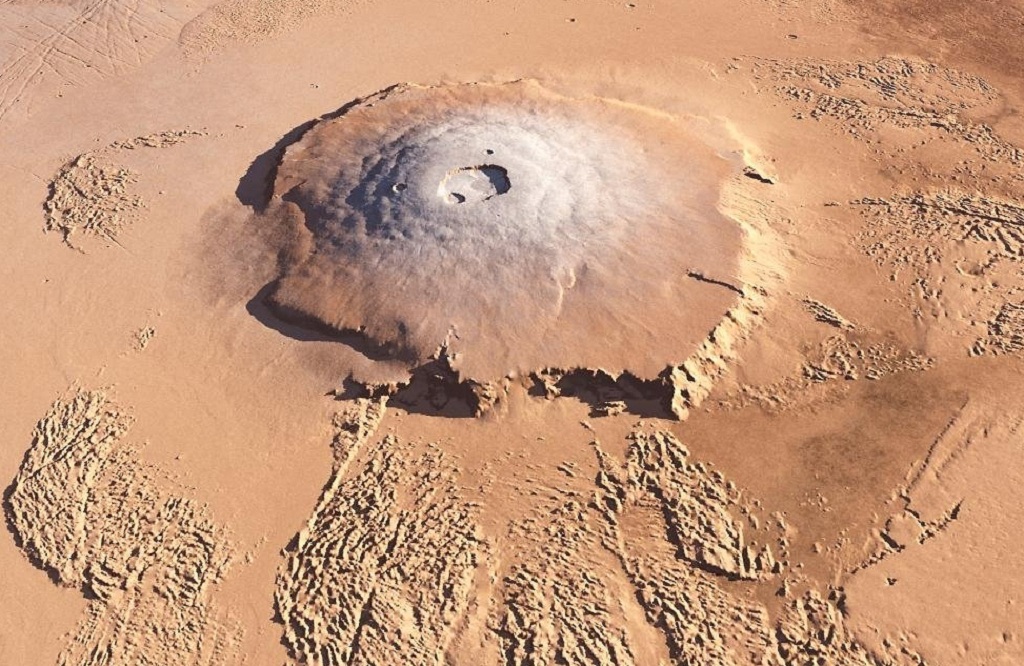
Image Description: Olympus Mons is the largest volcano in the solar system, towering over a vast plateau 25 km high. This 600 km wide volcano, bordered by cliffs, has a caldera 85 km long, 60 km wide, and 3 km deep, in which six other smaller collapse craters are found. The exceptional size of Olympus Mons is certainly due to the fact that Mars does not have tectonic plates, and thus lava has accumulated in the same place, on this hotspot, reaching an incredible height.
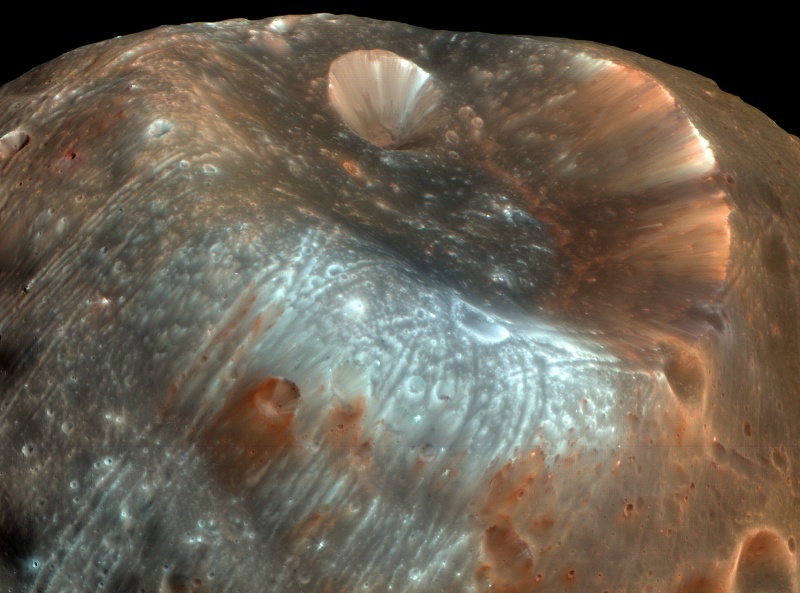
Image Description: On Phobos, the largest moon of Mars, the Stickney crater measures more than 9 km in diameter, nearly half of its diameter. Stickney is so large that this impact could have completely disintegrated the small moon of Mars. But Phobos is doomed since its orbit is below the synchronous altitude, tidal forces gradually decrease its orbital radius by 1.8 meters per century. In about 40 million years, it will break up to form a ring around Mars or crash on its surface.

Image Description: But where are the craters of asteroid Itokawa? The Japanese probe Hayabusa shows us a surface that does not resemble any other body in the solar system already photographed. The absence of circular impacts leads scientists to say that Itokawa is a rubble pile, a pile of rocks and pieces of ice weakly held together by gravity. The craters could fill with rocks at each gravitational shake when this near-Earth asteroid passes near Earth every year.
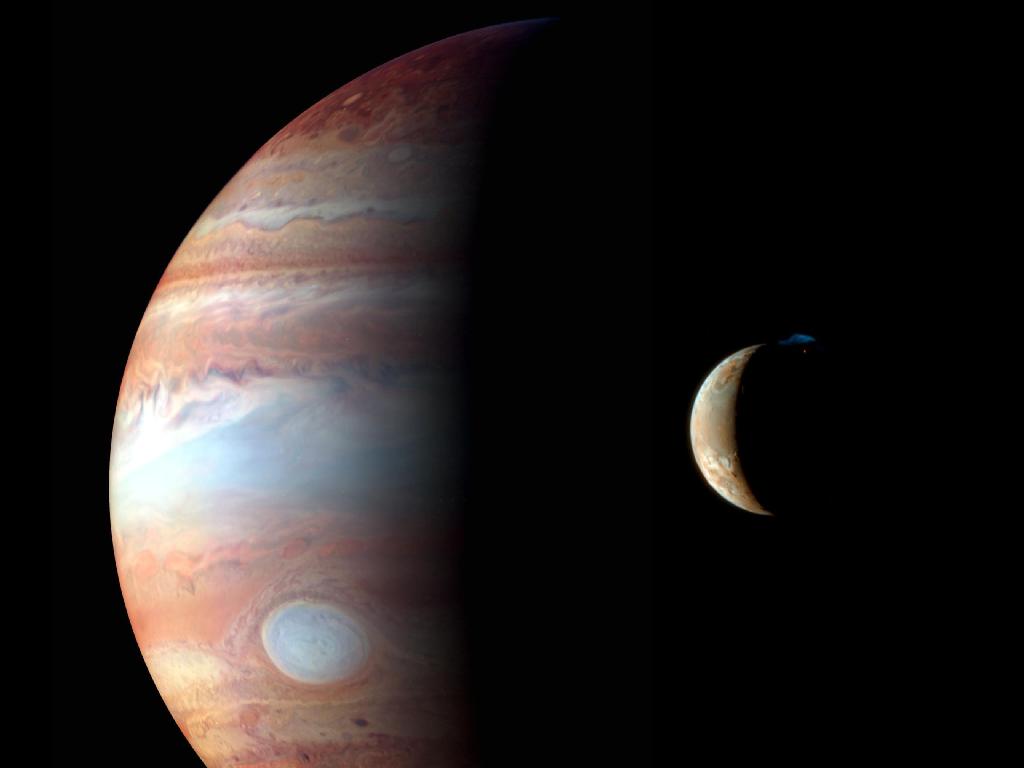
Image Description: The blue color shows high-altitude clouds and hazes, while the red shows deeper clouds in Jupiter's atmosphere. In the enlarged image, a major eruption is visible on the night side of Io, exactly on the northern volcano, Tvashtar. This small red dot represents the incandescent lava of the volcano; it is located under the bluish volcanic plume, illuminated by sunlight. The plume appears blue due to the scattering of light on fine particles.

Image Description: Europa's fissures open and close constantly with the tides. The fractures in its ice crust show this friction; most are double lines that extend on either side of the fissure, causing 'underground' water to rise. The surface ice, several kilometers thick, hides an ocean kept liquid by the heating produced by these forces due to its proximity to Jupiter. This ocean could reach 150 km in thickness. Europa has a very tenuous oxygen atmosphere.
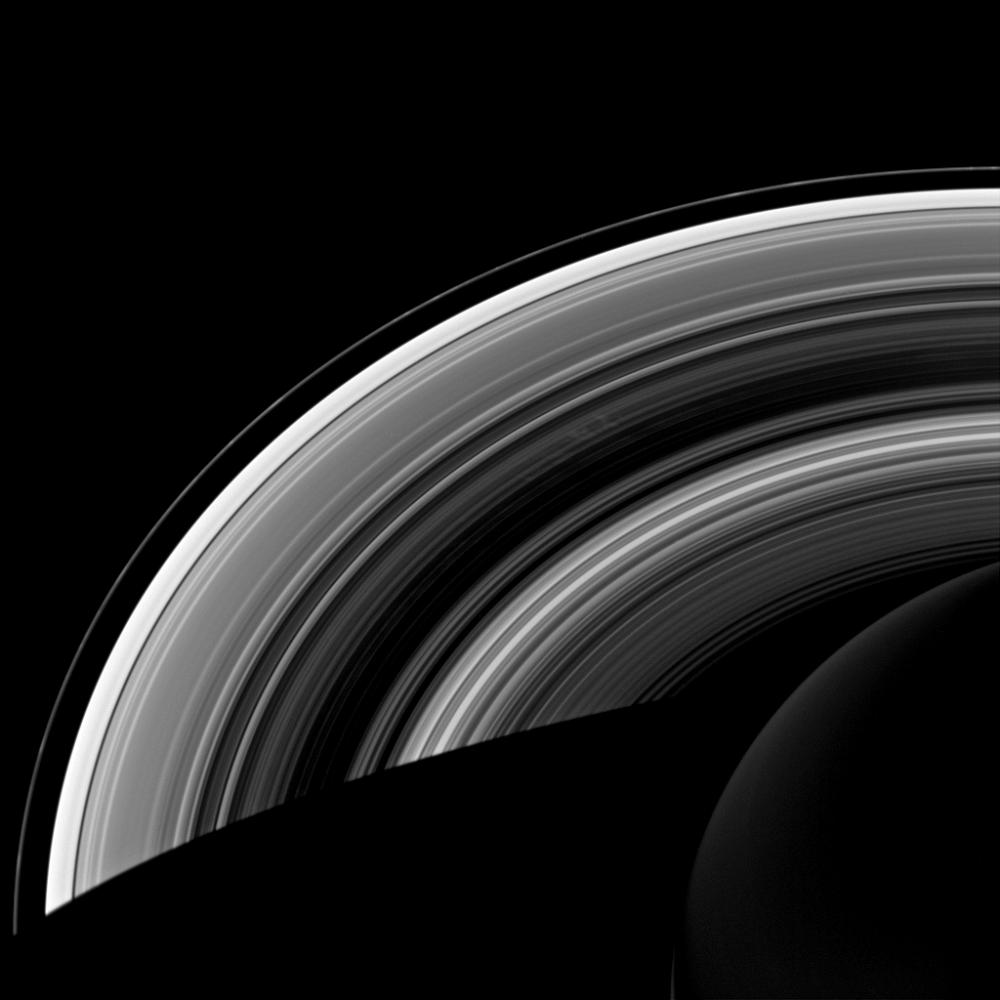
Image Description: The Rings of Saturn maintain complex resonances with certain satellites. The 'shepherd' satellites (Atlas, Prometheus, and Pandora) roll at the edge of the rings and are essential for the stability of the rings. Mimas seems responsible for the Cassini Division, Pan is located inside the Encke Division. The overall system is of great complexity, as shown in this image. Another mystery remains: the dark interval located between rings A and B contains more dust than ice.
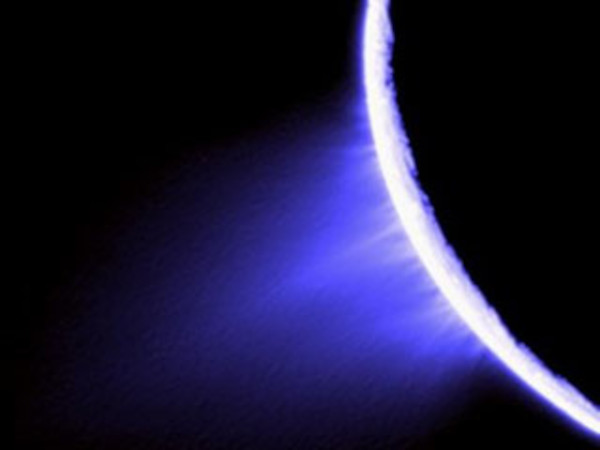
Image Description: Enceladus, the moon of Saturn, despite its small size of 500 kilometers in diameter, has geological activity. It presents fissures that are the source of ice plumes. These plumes spray its orbit; geysers constantly explode, ejecting ice particles and spreading a thin, swirling trail in the moon's wake. This trail constitutes the ring of ice particles that is replenished with each orbit of the moon around its planet. The detection of salty ice indicates that the small moon harbors a reservoir of liquid water under its surface.
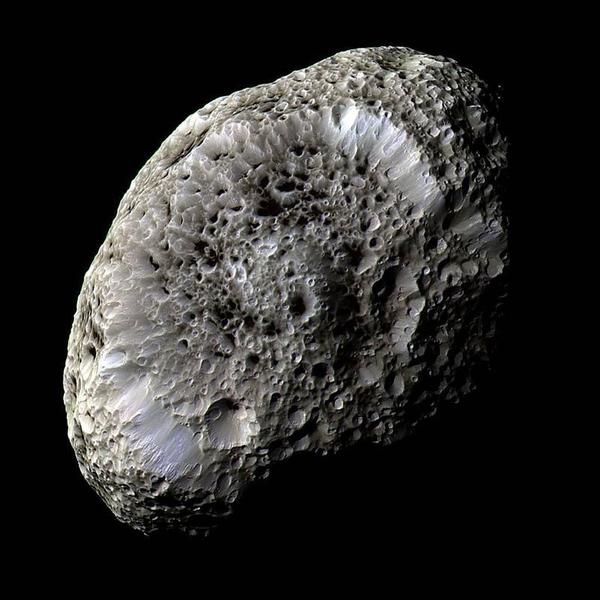
Image Description: The low density of Hyperion indicates that it is mainly composed of ice with a small amount of rock. Hyperion's rotation is chaotic; its axis of rotation varies so strongly that its orientation in space is impossible to predict. Hyperion is unique in its very irregular shape and highly eccentric orbit. This object is remarkably pitted with strange craters, and its surface is astonishing. Hyperion measures about 250 km in average diameter, rotates chaotically, and has such a low density that it could conceal a vast network of caves.
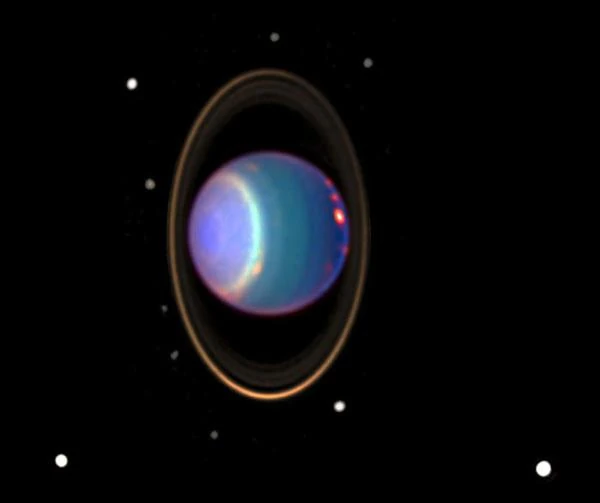
Image Description: Most planets rotate on an axis almost perpendicular to the plane of the ecliptic, but Uranus' axis is almost parallel to this plane. It seems to 'roll' on its orbit. Uranus has thin rings with sharp edges like the other gas giants; they are very dark like those of Jupiter and composed of relatively large particles up to 20 meters in diameter, in addition to fine particles, like the rings of Saturn. There are 13 main rings, all opaque and a few kilometers wide, the brightest being the Epsilon ring.

Image Description: Miranda, the closest moon of Uranus, has surely had a tumultuous past. Miranda shows a unique variety of terrain that leads some astronomers to think it has been fractured several times during its evolution, as shown by the famous 'chevron,' the bright V-shape just above the center. This surprising mosaic of very varied zones shows a series of ridges, valleys, and smooth surfaces, as well as very deep, dark canyons, like the large crater (in the center of the image) which has a depth of more than 15 km.
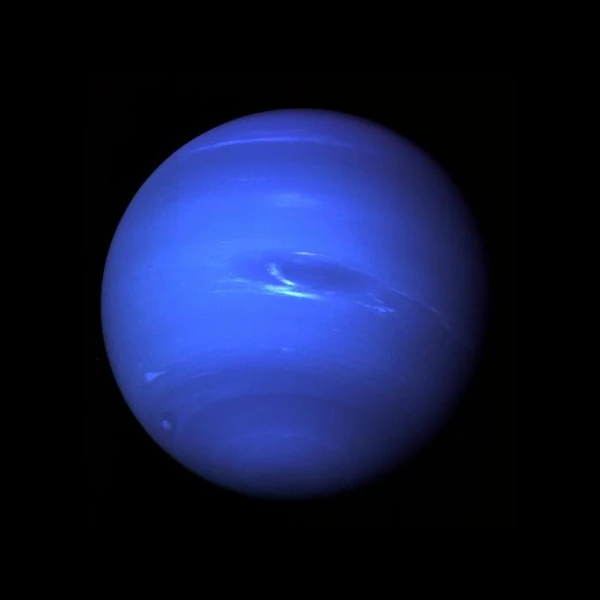
Image Description: At the edge of the solar system, 4.5 billion km away, the winds in Neptune's atmosphere are the fastest measured in the Solar System. Their astonishing speed has been estimated at 2,100 km/h. Several storms are visible, represented by the Great Dark Spot, accompanied by rapidly changing bright white clouds. To the south, another storm, the small spot with a bright core, is visible. Each storm in Neptune's atmosphere moves eastward at a different speed, making it difficult to see them close to each other.

Image Description: Triton is a large satellite 2,706 km in diameter, but its orbit is retrograde, meaning its direction of rotation is opposite to that of Neptune's rotation. This characteristic reveals that Triton is an external object captured by the giant planet. Moons with retrograde orbits cannot have formed from the same dust cloud as their planet in the primordial nebula. These are objects made elsewhere, probably in the not-too-distant Kuiper Belt.